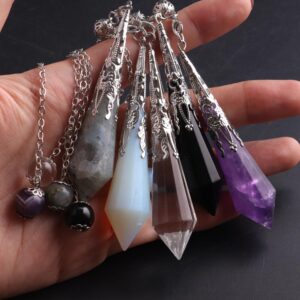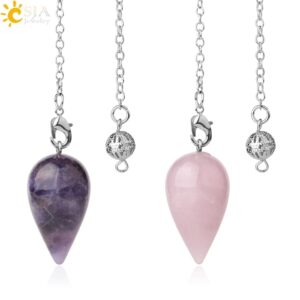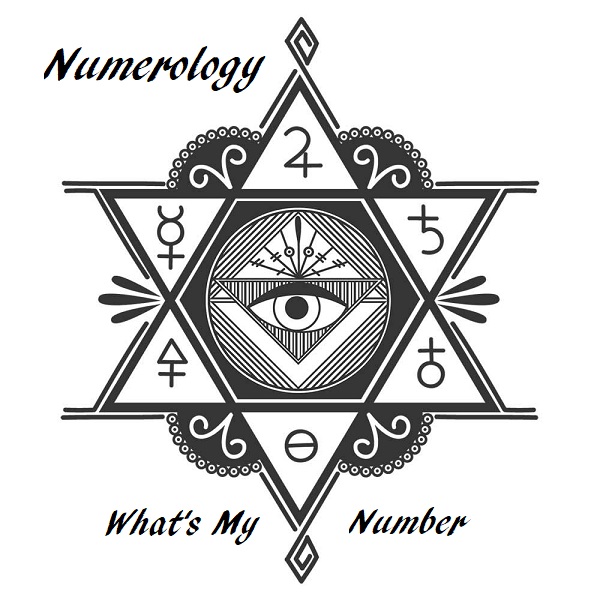The Purpose of Reiki Healing
Unlocking the Healing Power: Understanding the Purpose of Reiki
 In a world filled with stress and anxiety, people are increasingly seeking alternative therapies to find relief and restore balance to their lives. One such practice that has gained significant popularity is Reiki. But what exactly is Reiki healing and how does it work?
In a world filled with stress and anxiety, people are increasingly seeking alternative therapies to find relief and restore balance to their lives. One such practice that has gained significant popularity is Reiki. But what exactly is Reiki healing and how does it work?
Reiki, which translates to “universal life energy,” is an ancient Japanese healing technique that aims to promote physical, emotional, and spiritual well-being. Practitioners believe that by channelling this universal life force energy through their hands, they can activate the body’s natural healing abilities.
Unlike traditional medicine, Reiki does not focus on treating specific symptoms or illnesses. Instead, it aims to address the root cause of the problem and promote holistic healing. It is a gentle and non-invasive therapy that can be used in conjunction with other forms of treatment to enhance their effectiveness.
In this article, we will delve deeper into the purpose of Reiki, exploring its origins, principles, and benefits. Whether you’re new to Reiki or curious to learn more, join us on this journey of unlocking the healing power within yourself.
History and Origins of Reiki Healing
Reiki healing is a form of energy healing that originated in ancient Tibet and was rediscovered by Dr. Mikao Usui, a Japanese Buddhist monk, in the late 19th or early 20th century. According to Reiki lore, Usui had a mystical experience on Mount Kurama, where he received the Reiki symbols and the ability to channel universal life force energy. He then developed his own system of Reiki, called Usui Reiki Ryoho, which he taught to several students and masters. One of his students, Dr. Chujiro Hayashi, further refined the Reiki techniques and added hand positions to cover the whole body.
He also trained Hawayo Takata, a Japanese-American woman who brought Reiki to the western world in the 1930s. Since then, Reiki has become a popular and effective healing modality that is practiced by millions of people around the world. Reiki practitioners believe that they can access and transmit the Reiki energy through their hands, either by touch or at a distance, to promote physical, mental, emotional and spiritual well-being in themselves and others.
The Principles of Reiki
Reiki is a form of energy healing that originated in Japan in the late 19th century. The word Reiki means “universal life force energy” and refers to the vital energy that flows through all living beings. Reiki practitioners believe that they can channel this energy through their hands and transfer it to others for healing purposes. Reiki is based on the following principles:
-
- Reiki is natural and safe. It does not cause any harm or side effects to the recipient or the practitioner.
- Reiki is holistic and works on all levels of existence: physical, mental, emotional and spiritual.
- Reiki is not a religion or a belief system. It does not require any specific faith or dogma to practice or receive it.
- Reiki is simple and easy to learn. Anyone can become a Reiki practitioner by receiving an attunement from a qualified Reiki master.
- Reiki is compassionate and unconditional. It does not judge or discriminate anyone based on their background, status, condition or situation.
How Reiki Works
Reiki is a form of energy healing that originated in Japan in the early 20th century. It is based on the idea that life force, also known as Ki, flows through and around us, affecting our physical, mental, and emotional well-being. Reiki practitioners use their hands to channel positive energy into the body of the recipient, either by touching or hovering over them. The goal of Reiki is to restore the balance and harmony of the energy field, which can help with relieving pain, anxiety, fatigue, depression, and enhancing quality of life. Reiki does not cure diseases or illnesses, but rather complements other forms of treatment and supports the body’s natural healing abilities.
Benefits of Reiki for Physical and Emotional Healing
Reiki is a form of energy healing that originated in Japan. It is based on the idea that a universal life force flows through all living beings, and that by channelling this force, one can promote healing and well-being. Reiki practitioners use their hands to transmit this energy to themselves or others, either by touching or hovering over the body.
Reiki can have many benefits for physical and emotional healing. Some of the benefits include:
-
- Reducing stress and anxiety. Reiki can induce a state of relaxation and calmness, which can lower blood pressure, heart rate, and cortisol levels. This can help the body cope with stress and prevent or alleviate stress-related disorders.
- Enhancing immune system function. Reiki can stimulate the body’s natural defence mechanisms, which can help fight off infections, diseases, and toxins. Reiki can also reduce inflammation, which is linked to many chronic conditions.
- Improving pain management. Reiki can ease pain by releasing endorphins, the body’s natural painkillers. Reiki can also reduce muscle tension, spasms, and stiffness, which can improve mobility and range of motion.
- Accelerating wound healing. Reiki can increase blood circulation and oxygen delivery to the tissues, which can speed up the healing process and prevent infection. Reiki can also reduce scarring and promote tissue regeneration.
- Balancing emotions and moods. Reiki can harmonize the energy centres or chakras in the body, which are associated with different aspects of emotional health. Reiki can help clear negative emotions, such as anger, fear, guilt, and sadness, and enhance positive emotions, such as joy, love, peace, and gratitude.
- Supporting personal growth and spiritual development. Reiki can facilitate self-awareness and introspection, which can help one discover their true purpose and potential. Reiki can also connect one with their higher self and the source of all creation, which can foster a sense of meaning and belonging.
The Role of a Reiki Practitioner
The role of a Reiki practitioner is to facilitate the flow of universal life force energy through the client’s body, mind and spirit. Reiki is a form of energy healing that originated in Japan and is based on the belief that there is a subtle energy that animates all living beings. A Reiki practitioner uses their hands to channel this energy to the client, either by touching them directly or by holding their hands above them. The practitioner does not diagnose, prescribe or manipulate the client, but rather acts as a conduit for the energy to work according to the client’s highest good. Reiki can help with physical, emotional, mental and spiritual issues, as well as promote relaxation, stress relief and well-being.
Different Types of Reiki Healing
Reiki is a form of energy healing that originated in Japan. It is based on the idea that a universal life force flows through all living beings, and that by channelling this force, one can promote healing, balance and well-being. There are different types of Reiki, each with its own characteristics and methods. Some of the most common ones are:
-
- Usui Reiki: This is the original form of Reiki, founded by Mikao Usui in the early 20th century. It involves four levels of training, each with its own attunement and symbols. Usui Reiki practitioners use their hands to transmit energy to themselves or others, following a set of hand positions or using their intuition.
- Karuna Reiki: This is a form of Reiki that focuses on compassion and empathy. It was developed by William Lee Rand, a prominent Reiki master and teacher. Karuna Reiki uses eight additional symbols, each with a specific meaning and purpose. Karuna Reiki practitioners aim to heal the emotional and spiritual aspects of themselves and others, as well as the physical.
- Angelic Reiki: This is a form of Reiki that connects with the angelic realm. It was created by Kevin and Christine Core, who claim to have received guidance from Archangel Metatron. Angelic Reiki uses four symbols, which are said to be the keys to the angelic dimension. Angelic Reiki practitioners work with their guardian angels and other angelic beings to facilitate healing and transformation.
- Crystal Reiki: This is a form of Reiki that incorporates the use of crystals and gemstones. It was founded by Laurelle Shanti Gaia, a Reiki master and crystal healer. Crystal Reiki uses seven symbols, which correspond to the seven chakras or energy centres of the body. Crystal Reiki practitioners place crystals on or around themselves or others, to enhance the flow of energy and amplify the healing effects.
Reiki Training and Certifications
Reiki is a form of energy healing that originated in Japan. It is based on the idea that a universal life force flows through all living beings, and that by channelling this force, one can promote healing, balance and well-being. Reiki practitioners use their hands to transmit this energy to themselves or others, either in person or at a distance.
Reiki training and certifications are offered by various schools and organizations around the world. There are different levels of Reiki training, from beginner to master, and each level requires a certain amount of study, practice and attunement. Attunement is a process in which a Reiki master transfers the ability to channel Reiki energy to a student. Some Reiki schools also teach additional symbols, techniques and modalities that are not part of the traditional Reiki system.
Reiki training and certifications can provide many benefits for those who want to learn and practice this healing art. Reiki can help reduce stress, enhance relaxation, improve health, increase self-awareness, and foster spiritual growth. Reiki can also be used as a complementary therapy for various physical and mental conditions, such as chronic pain, anxiety, depression, insomnia, and more. Reiki can be practiced by anyone, regardless of age, background, or belief system.
Incorporating Reiki Healing into your Daily Life
Reiki is a form of energy healing that can benefit your physical, mental, emotional and spiritual well-being. You can incorporate Reiki into your daily life in various ways, such as:
-
- Practicing self-Reiki every morning or evening, or whenever you feel the need. You can use the traditional hand positions or simply place your hands on any area of your body that needs healing. You can also send Reiki to your chakras, aura, organs, systems, or any aspect of yourself.
- Giving Reiki to others, such as your family, friends, pets, plants, or even the planet. You can do this in person or from a distance, using the symbols and techniques you learned in your Reiki training. You can also join a Reiki share or circle to exchange Reiki with other practitioners.
- Using Reiki to enhance your meditation, prayer, yoga, or any other spiritual practice. You can invoke Reiki before, during, or after your practice to amplify the benefits and deepen your connection with the source of all life.
- Applying Reiki to your food, water, supplements, or any other substance you consume. You can hold your hands over them and intend that they are infused with Reiki energy. This can help to purify them, increase their nutritional value, and align them with your highest good.
- Creating a Reiki space in your home or workplace, where you can relax, recharge, and heal. You can do this by placing Reiki symbols on the walls, windows, doors, furniture, or any other object in the space. You can also use crystals, candles, incense, music, or any other element that resonates with you and supports your intention.
Conclusion: Embracing the Healing Power of Reiki
 Reiki healing is a holistic healing technique that originated in Japan and has been practiced for centuries. Reiki practitioners’ channel universal life force energy through their hands and direct it to the recipient, who can experience physical, emotional, mental and spiritual benefits. Reiki can help reduce stress, promote relaxation, enhance well-being, balance the chakras, support the immune system, accelerate healing, and more.
Reiki healing is a holistic healing technique that originated in Japan and has been practiced for centuries. Reiki practitioners’ channel universal life force energy through their hands and direct it to the recipient, who can experience physical, emotional, mental and spiritual benefits. Reiki can help reduce stress, promote relaxation, enhance well-being, balance the chakras, support the immune system, accelerate healing, and more.
Reiki healing is not a religion, but a way of connecting with the divine source of all creation. Reiki is compatible with any belief system and can be used as a complement to other therapies. Reiki is simple, safe and natural, and anyone can learn it. By embracing the healing power of Reiki, we can transform ourselves and the world around us.
